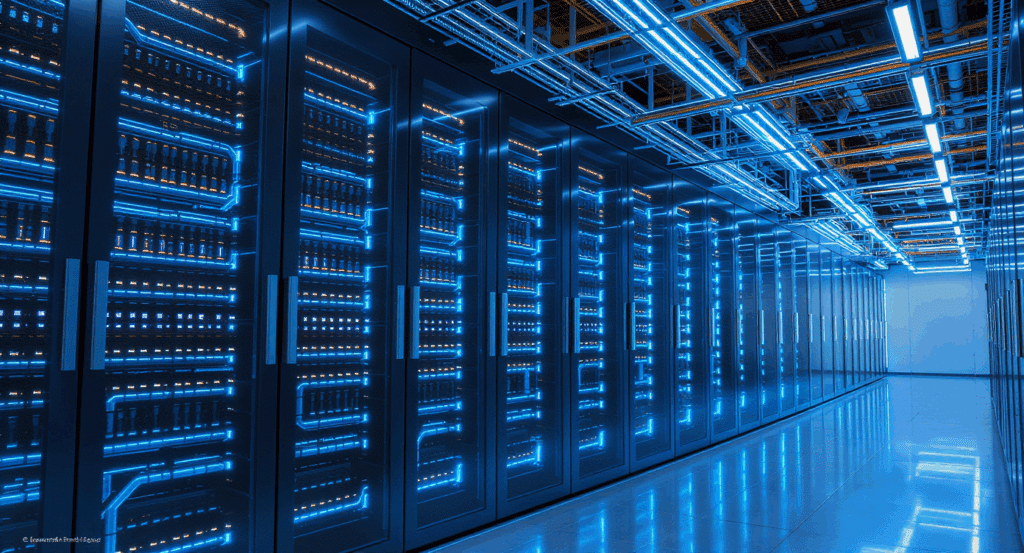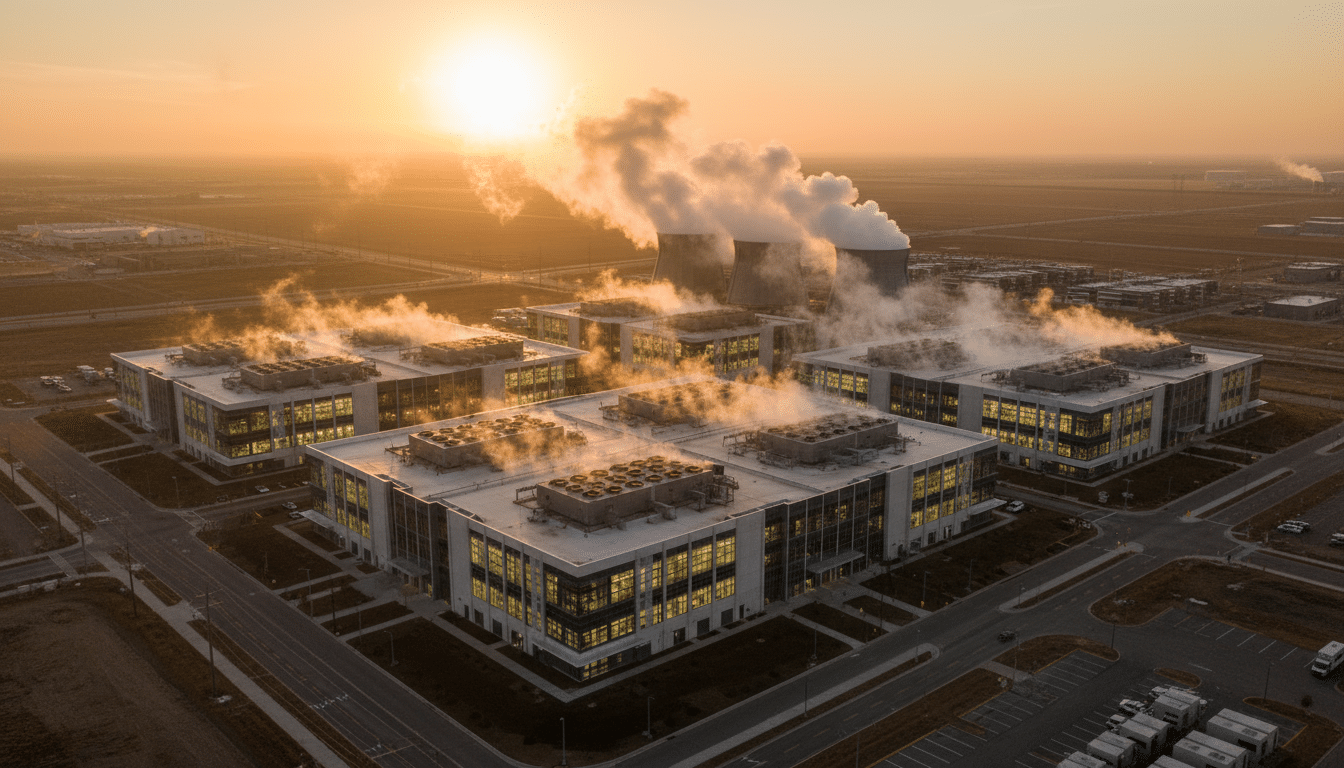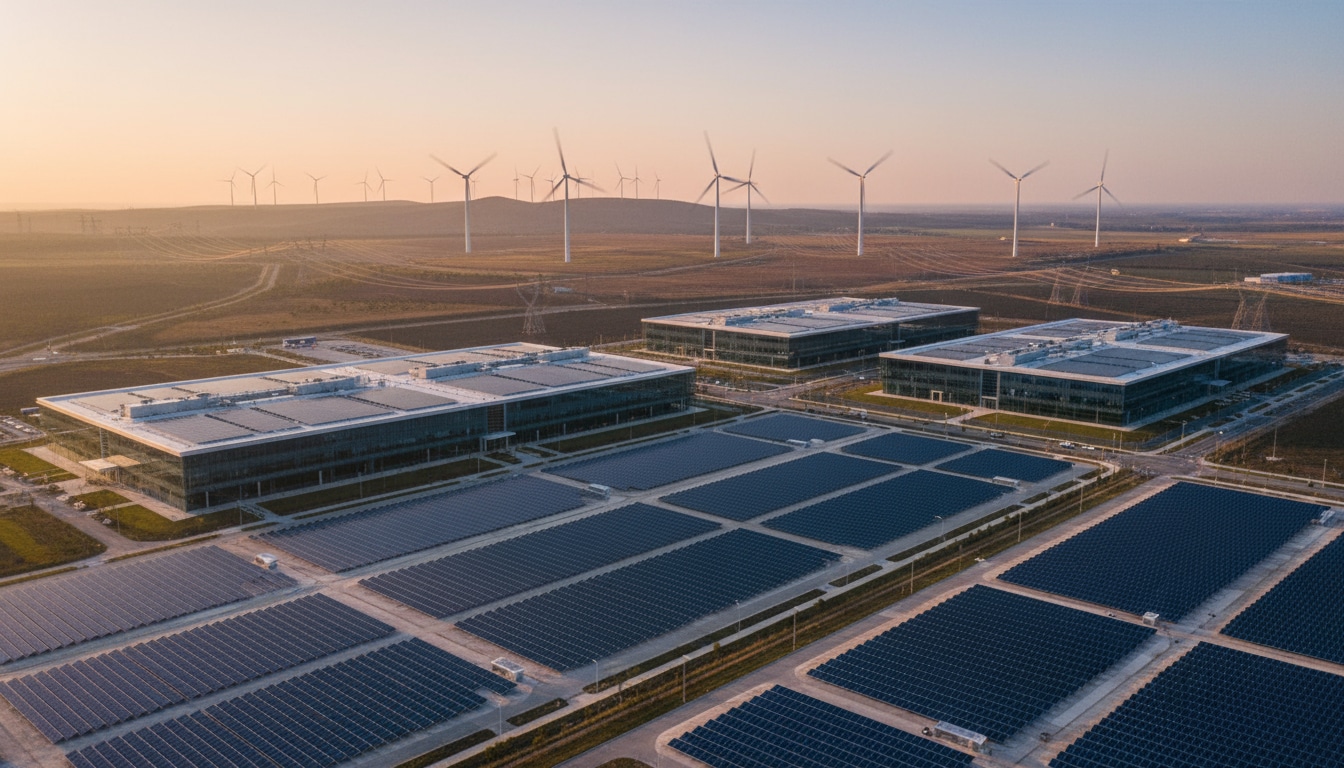Key Takeaways
Data center energy waste creates cascading costs far beyond electricity bills, threatening operational viability in the AI era.
- Inefficient cooling systems waste 30-40% of total facility energy while poor airflow management forces equipment to work overtime
- Hidden costs include accelerated hardware failure, reduced capacity utilization, and grid connection delays that can derail expansion plans
- AI workloads are driving data center electricity demand to double by 2030, making efficiency optimization critical for competitive positioning
- Strategic efficiency improvements deliver 15-25% operational cost reductions while positioning facilities for sustainable growth
Are You Bleeding Money Through Energy Waste Without Knowing It?
The artificial intelligence revolution is pushing data center energy consumption to unprecedented levels, with global electricity demand from data centers projected to reach 945 TWh by 2030. Yet while industry leaders focus on securing more power capacity, many are overlooking a critical opportunity hiding in plain sight: the massive energy waste already embedded in their operations.
Data center energy waste isn’t just about inflated electricity bills. It’s creating a web of hidden costs that compound across every aspect of facility operations, from premature hardware failures to grid connection delays that can derail expansion timelines. As power constraints become the primary bottleneck for digital infrastructure development, understanding and eliminating these inefficiencies has become essential for maintaining competitive positioning.
How Much Energy Are Data Centers Actually Wasting?
The numbers paint a stark picture of widespread inefficiency across the industry. According to the 2024 United States Data Center Energy Usage Report, U.S. data centers consumed 176 terawatt-hours in 2023, representing 4.4% of the country’s total electricity consumption. The report projects energy consumption could reach between 325 to 580 TWh by 2028, representing 6.7% to 12% of total U.S. electricity consumption.
The Uptime Institute’s 2024 Global Data Center Survey found that average Power Usage Effectiveness (PUE) across the industry remains at 1.56. This means that for every watt powering IT equipment, an additional 0.56 watts gets consumed by supporting infrastructure. While this represents improvement from historical levels, it still indicates substantial room for optimization, particularly as AI energy impact drives demand growth to accelerate beyond previous projections.
Energy loss in data centers manifests through multiple pathways that compound to create significant waste. Cooling systems alone account for 30-40% of total energy consumption in conventional data centers, with traditional air cooling requiring substantially more power than the actual computing equipment in many facilities. Poor airflow management exacerbates this issue by forcing cooling systems to work against mixing of hot and cold air streams.
Research from Jonathan Koomey identified that approximately 25% of servers in corporate environments are “zombies” that consume power without performing useful work. These findings highlight how data center energy waste extends beyond infrastructure to include fundamental resource allocation inefficiencies.
What Hidden Costs Are You Missing Beyond Your Energy Bills?
While electricity costs represent the most visible impact of energy loss in data centers, the hidden expenses often dwarf these direct charges. Equipment failure rates increase significantly in poorly managed thermal environments, with even minor temperature fluctuations causing additional wear on servers, storage systems, and networking equipment.
Capacity constraint penalties represent another major hidden cost. Inefficient facilities require more power and cooling capacity to support the same computational workload, reducing the effective utilization of available resources. This overprovisioning translates to higher capital expenditure requirements and longer payback periods for infrastructure investments.
Grid connection delays have emerged as a particularly expensive consequence of inefficiency. In regions like Northern Virginia and Silicon Valley, new power connections now require multi-year lead times that can derail project schedules. Facilities with poor energy efficiency require larger utility connections, making them more susceptible to these bottlenecks and associated opportunity costs.
Environmental compliance costs continue expanding as regulatory requirements become more stringent. The European Union’s Energy Efficiency Directive requires data centers over 500kW to report detailed sustainability metrics, with similar requirements emerging across U.S. states.
Where Is Your Data Center Bleeding Energy? 5 Major Waste Sources
1. Why Are Your Cooling Systems Working So Hard?
Traditional air cooling systems represent the largest source of waste in most data centers, consuming 30-40% of total facility energy while providing suboptimal thermal management. Legacy systems rely on constant-speed fans and pumps that operate at full capacity regardless of actual cooling demand, creating continuous energy waste during periods of lower utilization.
Poor cooling system placement compounds these inefficiencies by creating uneven temperature distribution throughout the facility. Hot spots force cooling equipment to work harder to maintain safe operating temperatures, while overcooled areas waste energy by maintaining unnecessarily low temperatures.

2. How Is Poor Airflow Sabotaging Your Efficiency?
Airflow inefficiencies create a cascade of energy waste that impacts both cooling systems and IT equipment. When cold supply air bypasses servers through unsealed floor openings or unused rack spaces, it mixes with hot return air, reducing the effectiveness of cooling efforts and forcing systems to work harder to maintain desired temperatures.
Hot and cold aisle containment failures allow warm and cool air streams to mix freely, creating thermal short-circuiting that wastes cooling capacity. Without proper separation, cooling systems must overcome the inefficiency of heating the very air they’re trying to cool.
3. Are Zombie Servers Draining Your Power Budget?
Server utilization rates across the industry remain surprisingly low, with many facilities operating at 20-30% of actual capacity. Underutilized servers consume a disproportionate amount of energy relative to their computational output, creating significant waste through idle power consumption.
Zombie servers—equipment that consumes power without performing useful work—represent pure energy waste with no operational benefit. These systems often result from poor asset management practices, inadequate monitoring, or simply being forgotten after deployment.
4. Is Your Power Distribution System Leaking Energy?
Power distribution inefficiencies occur at multiple levels within data center infrastructure. Transformers, power distribution units, and uninterruptible power supplies each introduce losses that compound throughout the power delivery chain. Poor power factor correction and harmonic distortion further reduce efficiency while potentially causing equipment problems.
5. Is Outdated Infrastructure Holding You Back?
Legacy facilities designed for older technology profiles often struggle to efficiently support modern workloads. Infrastructure sized for different power densities, cooling requirements, and utilization patterns creates systematic inefficiencies that are difficult to address without major renovations.
How Do You Calculate the True ROI of Energy Cost Optimization?
Understanding the financial impact of efficiency improvements requires comprehensive analysis that extends beyond simple energy bill reductions. The following tables illustrate typical cost structures and potential savings from energy cost optimization initiatives:
| Cost Category | Typical Annual Impact | Potential Reduction | Implementation Timeline |
| Electricity consumption | 40-60% of operating costs | 15-25% | 6-18 months |
| Equipment maintenance | 10-15% of operating costs | 20-35% | 3-12 months |
| Capacity expansion costs | Major capital expenditure | 25-40% | 12-36 months |
| Efficiency Measure | Typical Payback | Annual Savings | Additional Benefits |
| Airflow optimization | 6-12 months | 10-20% cooling costs | Improved equipment reliability |
| Cooling system upgrades | 12-24 months | 25-40% cooling costs | Enhanced capacity utilization |
| Power infrastructure optimization | 9-18 months | 15-25% distribution losses | Reduced maintenance requirements |
These calculations demonstrate that energy efficiency improvements typically deliver strong returns on investment while providing additional operational benefits. Advanced monitoring and analytics systems enable more precise measurement of efficiency improvements and ongoing optimization.
Which Energy Efficiency Solutions Actually Work?
Successful energy waste reduction requires a systematic approach that addresses both immediate inefficiencies and long-term strategic positioning. Energy efficiency best practices demonstrate that the most effective programs combine infrastructure improvements with operational optimization and strategic planning.

Advanced cooling technologies offer the most immediate impact for reducing data center energy waste. Liquid cooling systems can reduce cooling energy consumption by up to 40% compared to traditional air cooling while also improving computational performance. Immersion cooling can reduce cooling electricity by 95% according to industry analysis.
Comprehensive airflow management provides quick wins with relatively modest investment requirements. Installing blanking panels, implementing hot and cold aisle containment, and optimizing air distribution can deliver 10-20% efficiency improvements within weeks of implementation.
Smart power management systems enable dynamic optimization based on real-time conditions. Advanced power distribution units with monitoring capabilities, coupled with intelligent UPS systems and power factor correction, can reduce distribution losses while providing better visibility into consumption patterns.
Renewable energy integration addresses both efficiency and sustainability objectives while providing energy security benefits. On-site solar installations paired with battery storage can reduce grid electricity consumption while offering protection against power outages and price volatility.
How Can You Future-Proof Against Rising AI Energy Demand?
The artificial intelligence revolution is fundamentally changing data center energy requirements, with implications that extend far beyond simple capacity increases. AI energy impact will drive not only higher power densities but also different utilization patterns that challenge traditional efficiency approaches.
AI workloads typically operate at much higher sustained utilization rates compared to general-purpose computing, creating more consistent cooling demands but also requiring more robust thermal management. The power density requirements for AI infrastructure often exceed the capabilities of traditional air cooling systems, making liquid cooling a necessity rather than an option.

Geographic considerations become increasingly important as power constraints force infrastructure development to prioritize energy availability over traditional location factors. Digital infrastructure trends indicate that successful organizations are adopting power-first site selection strategies that consider renewable energy access, grid capacity, and regulatory environments as primary decision criteria.
Strategic partnerships with energy developers enable more comprehensive approaches to efficiency and capacity planning. Rather than treating energy as a commodity purchase, forward-thinking organizations are working with specialized providers who can deliver integrated solutions that combine land development, renewable energy generation, and purpose-built infrastructure optimized for specific workload requirements.
Frequently Asked Questions About Data Center Energy Waste
What is the typical ROI timeline for data center efficiency improvements?
Most data center efficiency improvements deliver positive returns within 12-24 months, with simpler measures like airflow optimization often paying back within 6-12 months. Comprehensive facility retrofits may require 18-36 months for full payback but provide more substantial long-term benefits.
How do I measure data center energy waste in my facility?
Start with calculating your facility’s Power Usage Effectiveness (PUE) by dividing total facility power consumption by IT equipment power consumption. A PUE above 1.6 indicates significant efficiency opportunities. Advanced monitoring systems can provide more granular analysis by tracking power consumption, airflow patterns, and temperature distribution.
Can renewable energy integration actually improve facility efficiency?
Yes, when properly implemented. On-site renewable generation paired with energy storage can reduce grid electricity consumption while providing more stable power delivery. Advanced renewable energy systems also enable demand response strategies that optimize energy consumption based on generation patterns and grid conditions.
What cooling efficiency improvements provide the best ROI for hyperscale data centers?
Airflow management improvements typically provide the best immediate ROI, often delivering 15-25% cooling efficiency gains with relatively modest investment. Hot and cold aisle containment, blanking panels, and proper rack arrangements can be implemented quickly with measurable results. For AI workloads requiring higher power densities, liquid cooling systems become essential rather than optional.
Transform Your Energy Strategy Today
Data center energy waste represents both a hidden drain on profitability and an opportunity for competitive advantage. As AI workloads drive unprecedented energy demand growth, the organizations that master efficiency optimization will secure better positioning for sustainable growth while those that ignore these fundamentals will face mounting operational constraints.
The convergence of rising energy costs, grid capacity limitations, and sustainability mandates makes comprehensive efficiency planning essential for long-term success. Yet addressing these challenges requires more than isolated improvements—it demands integrated solutions that combine strategic site selection, renewable energy development, and purpose-built infrastructure designed for optimal performance.
Hanwha Data Centers specializes in developing energy campuses that integrate renewable generation with data center infrastructure, eliminating the complexity of managing multiple vendors while ensuring optimal efficiency from day one. Our comprehensive approach to data center development transforms energy challenges into strategic advantages through expert site selection, utility-scale renewable integration, and purpose-built facilities designed for next-generation workloads. Contact us today to learn more.




